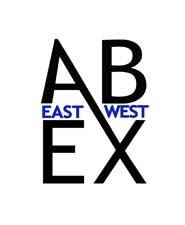
Once Abstract Expressionism caught the imagination of artists, it became a truly international movement making the rounds from New York to Europe, Asia, California, and Latin America.
Two seemingly different pieces in the show illustrate this phenomena. Side by side hang a pair of small works, one by Raul Milian, the other by Yutaka Ohashi; interestingly, both artists are from island nations rich in cultural and artistic history-Cuba and Japan. The Milian watercolor from 1954 is a classic example of abstraction with a uniquely Cuban sensibility. Dark, amorphous watercolor washes create a smokey depth like peering into ocean caves or pathways through the jungle at night. We can see the influence of the Cuban surrealist Wilfredo Lam by the inscrutability of the dark forms. This piece was exhibited in the Third San Paolo Biennial of 1955. In similar watercolor tones with added elements of collage is the piece by Yutaka Ohashi. The Japanese love for creating art with paper is evident. Torn and colored pieces of Mulberry paper are masterfully laid over a larger water colored sheet of brown washes. They appear as an almost topographical map of an imaginary island nation. This piece was originally exhibited at the Sweetow Gallery in Boston in the 1950's. Side by side they remind us of how fully Abstract Expressionism was embraced in disparate island nations.

